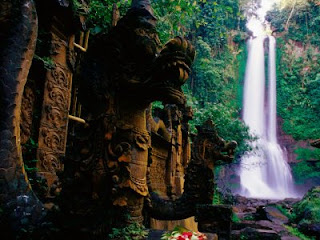

The Celebes Crested Macaque (Macaca nigra), also known as the Crested Black Macaque, Sulawesi Crested Macaque, or the Black "Ape", is an Old World monkey that lives in the northeast of the Indonesian island of Sulawesi (Celebes) as well as on smaller neighboring islands.
Its skin and hairless face is, with the exception of some white hair in the shoulder range, entirely jet black. The long muzzle with high cheeks and the long hair tuft, or crest, at the top side of the head are remarkable. The tail is only approximately 2 cm of stub. With a total body length of 45 to 60 cm and a weight of 7 to 10 kg, it is one of the smaller macaque species.
he Celebes Crested Macaque is a diurnal rain forest dweller. This macaque is primarily terrestrial, spending more than 60% of its day on the ground foraging for food and socializing, while sleeping and searching for food in the trees.
It lives in groups of 5 to 25 animals. Smaller groups have only a single male, while larger groups have up to four males. The females, however, always outnumber the males by about 4:1. Since young males must leave their birth group upon maturity, they sometimes form bachelor groups before they look for a connection to an existing mixed group. Communication consists of various sounds and gestures; such as the presentation of the long eyeteeth while grimacing a clear threatening gesture.
The Celebes Crested Macaque is frugivorous, with 70% of its diet consisting of fruits. It also consumes leaves, buds, seeds, fungus, birds and bird eggs, insects (such as caterpillars), and the occasional small lizard or frog.
The Celebes Crested Macaque is promiscuous, with both males and females mating multiple times with multiple partners. The receptivity of the females is clearly indicated by a tumescence (swelling) and redness which, in contrast to the black skin color, is particularly remarkable. The gestation time is 174 days, and the birth of the usually single offspring happens in the spring when food is more plentiful. Young animals are nursed approximately one year and become fully mature in 3 to 4 years, females somewhat sooner than males. Its life expectancy is estimated at approximately 20 years.
Because it devastates crops and fields, the Celebes Crested Macaque is hunted as a pest. It is also hunted to provide bushmeat. Clearing the rain forests further threatens its survival. Its situation on the small neighbouring islands of Sulawesi (such as Bacan) is somewhat better, since these have a low human population. The total population of the macaque on Sulawesi is estimated at 4,000-6,000, while a booming population of up to 100,000 monkeys is found on Bacan.
Its skin and hairless face is, with the exception of some white hair in the shoulder range, entirely jet black. The long muzzle with high cheeks and the long hair tuft, or crest, at the top side of the head are remarkable. The tail is only approximately 2 cm of stub. With a total body length of 45 to 60 cm and a weight of 7 to 10 kg, it is one of the smaller macaque species.
he Celebes Crested Macaque is a diurnal rain forest dweller. This macaque is primarily terrestrial, spending more than 60% of its day on the ground foraging for food and socializing, while sleeping and searching for food in the trees.
It lives in groups of 5 to 25 animals. Smaller groups have only a single male, while larger groups have up to four males. The females, however, always outnumber the males by about 4:1. Since young males must leave their birth group upon maturity, they sometimes form bachelor groups before they look for a connection to an existing mixed group. Communication consists of various sounds and gestures; such as the presentation of the long eyeteeth while grimacing a clear threatening gesture.
The Celebes Crested Macaque is frugivorous, with 70% of its diet consisting of fruits. It also consumes leaves, buds, seeds, fungus, birds and bird eggs, insects (such as caterpillars), and the occasional small lizard or frog.
The Celebes Crested Macaque is promiscuous, with both males and females mating multiple times with multiple partners. The receptivity of the females is clearly indicated by a tumescence (swelling) and redness which, in contrast to the black skin color, is particularly remarkable. The gestation time is 174 days, and the birth of the usually single offspring happens in the spring when food is more plentiful. Young animals are nursed approximately one year and become fully mature in 3 to 4 years, females somewhat sooner than males. Its life expectancy is estimated at approximately 20 years.
Because it devastates crops and fields, the Celebes Crested Macaque is hunted as a pest. It is also hunted to provide bushmeat. Clearing the rain forests further threatens its survival. Its situation on the small neighbouring islands of Sulawesi (such as Bacan) is somewhat better, since these have a low human population. The total population of the macaque on Sulawesi is estimated at 4,000-6,000, while a booming population of up to 100,000 monkeys is found on Bacan.















































